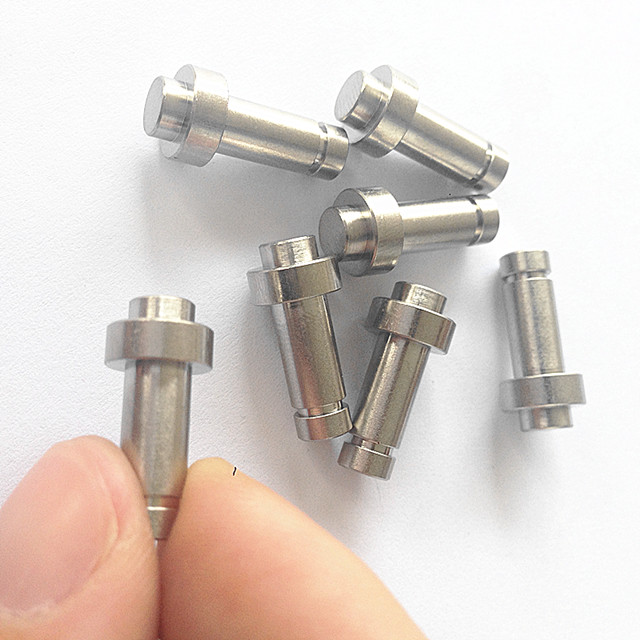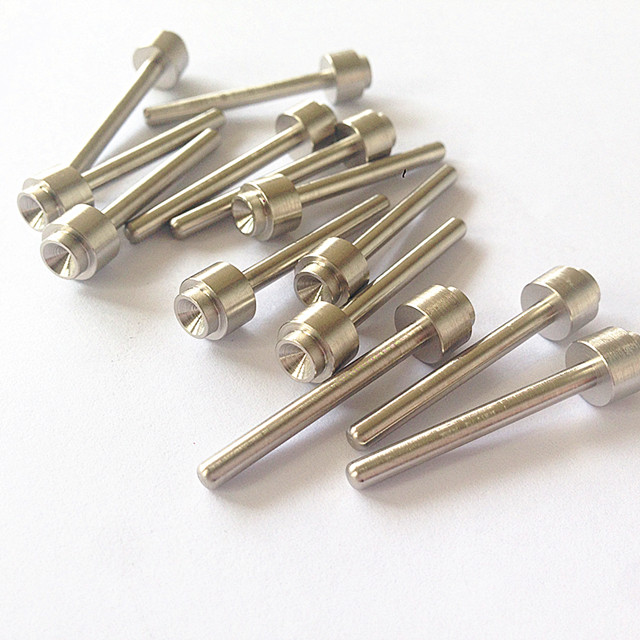VMT’s blogs aim to share our hard earned knowledge on manufacturing and product development. We hope these articles help you to optimize your product design and better understand the world of rapid prototyping, rapid tooling, 3D printing and low-volume manufacturing.
Cast Iron vs Steel: Differences and Distinctions
In the vast field of metal processing, steel and cast iron are the core materials. Although they are similar in appearance and certain characteristics, there are essential differences between them.
Are you curious about the differences between cast iron and steel? Which is better, steel or cast iron? Next, I’ll show you what’s unique about these two materials and answer your questions.
What is Cast Iron?
Cast iron is an iron-carbon alloy with a carbon content of more than 2% and a silicon content of about 1-3%. Cast iron is produced by remelting pig iron from the steelmaking process in a furnace and adding ferroalloys, scrap steel and recycled iron to adjust its chemical composition. Cast iron is known for its excellent castability and workability, making it an ideal material for manufacturing complex and wear-resistant castings, such as pipes, machines and parts for the automotive industry.
What is Steel?
Steel is an iron-based alloy consisting primarily of iron and a certain amount of carbon, usually between 0.02% and 2.1%. The carbon content and other alloying elements can be adjusted to enhance specific mechanical properties, such as strength, hardness, and ductility. Due to its versatility and durability, steel is used in tools, cars, bicycles, machines, and appliances.
Differences Between: Cast Iron vs Steel
Cast iron and steel are both iron-carbon alloys, but they differ significantly in composition, properties, and applications.
Cast Iron vs Steel: Carbon Content:
In its natural state, iron is usually found in the form of iron oxides. Through processing, it can be turned into alloys such as cast iron and steel, which differ mainly in their carbon content. Cast iron is composed of iron, carbon, and silicon, with carbon levels typically ranging from 2.5 to 4.0 percent. It also contains small amounts of elements like manganese, phosphorus, and sulfur.
Steel, on the other hand, contains much less carbon, generally less than 2.11 percent. This lower carbon content gives steel greater strength and ductility, while cast iron tends to be more brittle.
Types Of Cast Iron
There are many types of cast iron. Here are some of the main types of cast iron and their characteristics:
| Category | Type | Definition | Features |
|---|---|---|---|
| By Chemical Composition | Ordinary Cast Iron | Cast iron that does not contain alloying elements. Common types include gray cast iron, malleable cast iron, and ductile iron. | Good castability, machinability, and wear resistance. Widely used in industrial applications. |
| Alloy Cast Iron | Produced by adding alloying elements (e.g., Mn, Cr, Ni, Mo) to improve specific properties. | Offers enhanced strength, hardness, wear resistance, heat resistance, or corrosion resistance. Suitable for specialized environments. | |
| By Fracture Color | Gray Cast Iron | Contains carbon mainly in the form of flake graphite, giving the fracture surface a dark gray appearance. | Excellent castability and machinability, good wear resistance, but lower strength and toughness. |
| White Cast Iron | Most carbon exists as cementite; fracture surface is silvery white due to lack of free graphite. | Very hard and wear-resistant, but extremely brittle and difficult to machine. | |
| Mottled (Hemp) Cast Iron | Carbon exists both as graphite and cementite, creating a mixed appearance with dark and light spots. | Intermediate properties between gray and white cast iron. Brittle and hard, used less commonly. | |
| By Production Method and Structure | Ordinary Gray Cast Iron | The standard and most widely used gray cast iron. | Shares all characteristics of gray cast iron such as ease of casting and machining. |
| Inoculated Cast Iron | Modified version of gray cast iron treated through “inoculation” to refine its structure. | Improved strength, toughness, and uniformity compared to ordinary gray cast iron. | |
| Malleable Cast Iron | Produced by annealing white cast iron to transform carbon into graphite clusters. Also known as ductile cast iron in some contexts. | High toughness and good machinability, but cannot be forged. | |
| Ductile Iron | Created by adding nodularizing agents before casting to form spherical graphite structures. | Mechanical properties close to steel; combines the benefits of both steel and cast iron. | |
| By Special Performance | Special Cast Iron | Cast iron developed for specific applications such as wear resistance, heat resistance, or corrosion resistance. | Properties vary depending on purpose. Examples include wear-resistant, heat-resistant, and corrosion-resistant cast irons. |
Types Of Steel
Steel is categorized based on its carbon content and the presence of alloying elements, which significantly influence its strength, hardness, toughness, and corrosion resistance. The two main categories are carbon steel and alloy steel, each of which is further divided into subtypes based on composition and application. Understanding these types helps manufacturers choose the appropriate material for different engineering and industrial purposes.
| Category | Type | Definition | Features & Applications |
|---|---|---|---|
| Carbon Steel | Low Carbon Steel | Contains less than 0.25% carbon, along with small amounts of silicon, manganese, phosphorus, and sulfur. | Offers excellent ductility and weldability. Commonly used in construction materials, automobile bodies, wires, and pipelines. |
| Medium Carbon Steel | Contains between 0.25% and 0.6% carbon. A compromise between hardness and toughness. | Used for structural components like rails, gears, axles, and crankshafts, where strength and wear resistance are important. | |
| High Carbon Steel | Contains more than 0.6% carbon, resulting in increased hardness and brittleness. | Ideal for manufacturing cutting tools, springs, blades, and high-strength wires due to its excellent hardness and wear resistance. | |
| Alloy Steel | Low Alloy Steel | Alloyed with elements such as chromium, nickel, or molybdenum, with total content not exceeding 5%. | Enhanced strength, corrosion resistance, and toughness. Frequently used in bridges, automotive components, and pressure vessels. |
| Medium Alloy Steel | Contains 5% to 10% alloying elements to enhance specific performance attributes. | Suitable for components in power plants, heavy machinery, and specialized mechanical parts that require moderate corrosion or heat resistance. | |
| High Alloy Steel | Alloy content exceeds 10%, often including chromium, nickel, vanadium, or tungsten. | Exhibits superior corrosion and heat resistance. Used in making stainless steel, aerospace parts, surgical tools, and high-speed cutting instruments. |
Cast Iron vs Steel: Performance:
Steel:
Steel is widely recognized for its superior mechanical performance, making it a preferred material in construction, automotive, and industrial applications. One of its key advantages is its excellent plasticity and toughness, which allows it to undergo significant deformation under stress without cracking or breaking.
In addition to strength, steel offers outstanding formability and weldability. It can be easily shaped into complex forms using stamping and other forming techniques, and its compatibility with various welding methods enables the production of large, intricate structures.
Cast iron:
Cast iron is known for its excellent castability, which allows it to flow easily into molds and form complex or detailed shapes with precision. This property makes it especially suitable for producing components with intricate geometries. Cast iron also provides high wear resistance, making it a strong performer in environments involving constant friction or surface contact, such as in engine blocks, machinery bases, and brake components.
In addition to these qualities, cast iron offers good cutting processability. It generates low cutting resistance and results in slower tool wear during machining, which helps increase production efficiency.
Cast Iron vs Steel: Surface Treatment:
Surface treatment is to apply treatment on the surface of materials through physical, chemical or mechanical methods to change their surface properties, structure or appearance to achieve the purpose of enhancing performance and protecting the substrate.
The surface treatment methods of cast iron mainly include phosphating treatment, blackening treatment, etc. Phosphating treatment is a common surface treatment method for cast iron, which can remove rust and provide an anti-rust effect. The surface color after treatment is gray-black or black. Blackening treatment is to use a normal temperature blackening agent to form a protective film after pre-treatment of cast iron parts to improve anti-corrosion ability.
Surface treatment methods of steel include electroplating, polishing, anodizing, etc. Electroplating is to coat the surface of steel with a layer of other metals, such as zinc, nickel, and chromium, to improve corrosion resistance, wear resistance, and aesthetics. Polishing can be mechanical polishing or chemical polishing to improve the finish of the steel surface and obtain different gloss effects. Anodizing is the formation of an oxide film on the surface of steel through an electrochemical process to improve corrosion resistance and hardness.
Cast Iron vs Steel: USE
Steel: can be used to manufacture mechanical parts, engineering structural parts, manufacturing cutting tools, molds, measuring tools and other tools.
Cast iron: widely used in agricultural machinery, automobile manufacturing, machine tool and heavy machinery manufacturing, defense industry and other industries.
The following is a simplified comparison of the characteristics of cast iron and steel:
| Characteristic/Advantage | Cast Iron | Steel |
|---|---|---|
| Composition | High carbon content (typically >2.14%), with silicon, manganese, etc. | Lower carbon content (typically <2.14%), with the option of adding alloy elements |
| Casting Ability | Excellent, suitable for complex shapes and thin-walled parts | Poor, usually processed through forging, rolling, etc. |
| Mechanical Properties | Lower (e.g., tensile strength, toughness), but good wear resistance | Higher, including strength, toughness, etc. |
| Corrosion Resistance | Good, but depends on specific type and alloy elements | Can be enhanced through alloying, e.g., stainless steel |
| Machinability | Good cutting and machining ability, but difficult to forge | Easily forgeable, rollable, weldable, and adaptable to various processing methods |
| Cost | Typically lower, with lower production costs and raw material prices | Higher, but with superior performance and potential for long-term economic benefits |
| Application Areas | Machinery manufacturing, construction, civil engineering, transportation, kitchenware, etc. | Wide range of fields including construction, bridges, machinery manufacturing, aerospace, medical equipment, energy, etc. |
In Conclusion
As basic materials in the metal processing industry, iron and steel support the development of modern society. I believe that by reading the above content, you have understood the unique features of iron and steel, and have made certain choices in selecting materials.
Start Your Custom Metal Parts CNC Precision Machining and Manufacturing
In the field of hardware parts machining, cast iron and steel are indispensable metal materials. They are widely used in many key links such as CNC machining center operation, precision extrusion molding and casting process. Choose us VMT, VMT has 15 years of experience in CNC parts machining. We strictly follow 12 quality inspection checkpoints to ensure that the yield rate of batch machining products is as high as 99.98%, building an indestructible wall of protection for your product quality, so that each product meets the high-precision requirements. Choosing VMT means choosing a trustworthy partner.
Frequently Asked Questions About Cast Iron vs Steel
Is Wrought Iron Steel?
Wrought iron is not steel. Although both are iron-carbon alloys, there are significant differences in carbon content and properties.
Steel has a carbon content between 0.05% and 2%, while wrought iron has a carbon content of less than 0.04%.
How Many Types of Iron Are There?
Iron is classified primarily based on its carbon content and how it is processed. In terms of carbon content, iron can be divided into pig iron (carbon content greater than 2%), wrought iron (carbon content less than 0.02%) and steel (carbon content between 0.02% and 2%). Each type has different characteristics in terms of hardness, toughness, plasticity, etc. and is suitable for different application scenarios. In terms of processing methods, iron also includes cast iron obtained through special processes such as melting, alloying, etc.
Will Steel Rust?
When steel is exposed to moist air, especially in an environment containing oxygen, water or certain chemicals, it will undergo an oxidation reaction to form rust. In order to prevent steel from rusting, we at VMT usually adopt a variety of surface treatment measures. For example, painting, galvanizing, chrome plating, stainless steel processing, etc.




